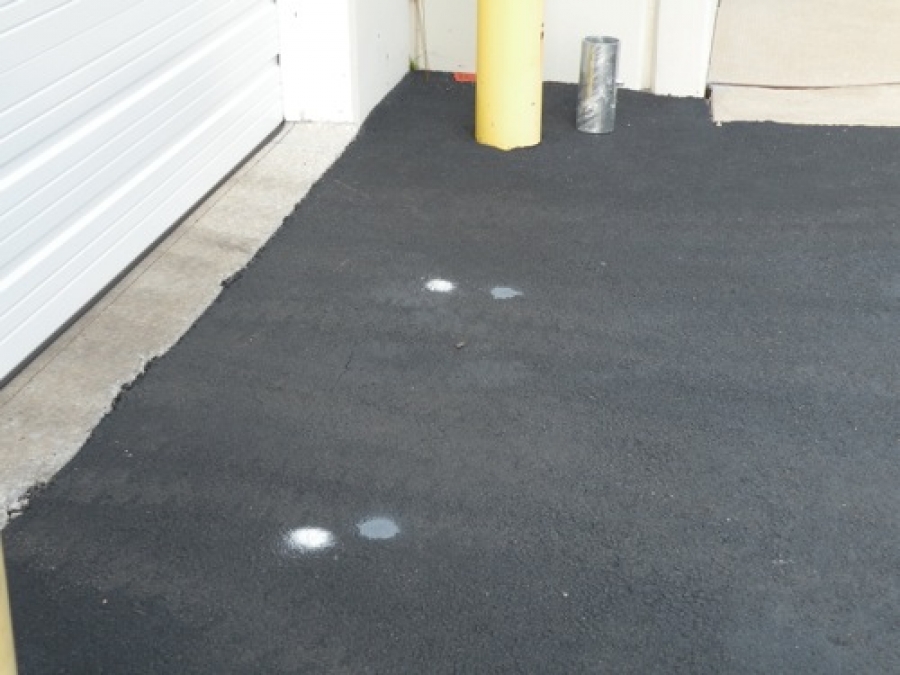How to Install Bollards (Step-by-Step)
Enjoying the full security of our heavy duty removable bollards requires careful installation. By failing to properly install your bollards and barriers, you prevent them from reaching their full potential and protecting your property as effectively as possible. Discover how to safely install your bollards, as well as how to install different types of bollards, below.
Safety Bollard Installation Instructions
TrafficGuard, Inc makes it as easy as possible to correctly install our bollards with these comprehensive instructions. Use these reference photos as a practical visual guide to the ideal bollard installation, and your ground sleeves, bollards and barriers will remain firmly in place.
1. Mark Your Installation Points
First, mark your installation points. We recommend your bollards be no more than 5 feet apart. Any space larger than this can fail to block the width of smaller vehicles.
2. Auger Footing Hole to Spec
After marking your installation points, use an auger to drill holes where you want to implement bollards and barriers. The hole itself will be significantly wider than the bollard or ground sleeve itself, as you need to leave room for installing a rebar reinforcement and filling the area around the bollard or ground sleeve with concrete.
3. Set Gravel Drainage Base
At the bottom of the hole you drilled, you’ll need to add a layer of gravel that acts as a drainage point for ground sleeves. This prevents rain, snow, mud and water from accumulating in the ground sleeves for your removable bollards.
4. Prepare Rebar Cage to Spec & Position It
Next, you’ll want to prepare a rebar cage to your specifications and position it. A cylindrical rebar cage provides reinforcement for the ground sleeve or the bollard you plan to install — drop it in the hole and let it rest on top of the gravel.
5. Attach PVC Drainage Pipe to Sleeve
Then, attach a PVC drainage pipe to the bottom of your ground sleeve and place it inside the rebar cage in the hole.
6. Position Sleeve with PVC Pipe so Flush with Finish Grade
Once the drainage pipe is attached, you’ll need to properly position the sleeve. If you are installing ground sleeves for removable bollards, ensure that the surface of the ground sleeve is flush with the surface of the ground and level. If you are installing a surface mounted fixed barrier, ensure that it stands a full 36″ above the surface for the best level of protection.
7. Pour Concrete & Allow Cure
Next, fill the hole with concrete and smooth it level with the ground—if you installed a ground sleeve, wait for the concrete to completely cure before installing your bollard.
8. Insert Bollards to Protect Facilities
Once the concrete is leveled with the ground (and completely cured if a ground sleeve is involved), you can insert your bollards to help ensure optimal protection for your facilities.
How to Install Different Types of Bollards
The type of bollard influences how you’re going to need to install it to ensure optimal security. For example, depending on the type and size of the bollards you're installing, you may need to use heavy duty construction equipment to properly prepare the area, as well as concrete to finish the bollard post installation. Below TrafficGuard, Inc. discusses how to install embedded and removable, and surface mounted barriers.
Installing Embedded and Removable Bollards
Embedded and removable bollards have a more involved installation process than surface-mounted alternatives, but this can ultimately make them longer-lasting and less susceptible to tampering. To install removable bollards, you'll need to drill through the installation site using an powered auger, creating a hole significantly larger than the diameter of the bollard itself. At the bottom, you'll install gravel and a rebar cage to facilitate moisture drainage and reinforce the bollard. Finally, you'll install either the bollard itself or the removable bollard's ground sleeve, holding it in place while you fill the hole with cement.
Installing Surface-Mounted Bollards and Barriers
Surface-mounted bollards and barriers can be considerably simpler and faster to install, as they do not necessarily require the same materials or process. In instances where a pre-existing concrete slab is in place, collapsible and fixed bollards can often be mounted directly to the slab with drill in concrete anchors. In applications where the bollard is installed in asphalt or dirt, a footing is recommended taking into account the frost line in a given region. Surface-mounted posts come in two types: collapsible and fixed. While collapsible bollards can be lowered and raised to alternatively allow and block traffic, fixed posts cannot be removed without completely uninstalling them—not something that you should do on a regular basis.
Learn More About Bollard Installation from TrafficGuard, Inc
For more information on how to install bollards or to learn more about the bollards we offer, please contact us today. Our team is happy to answer any questions you may have.











